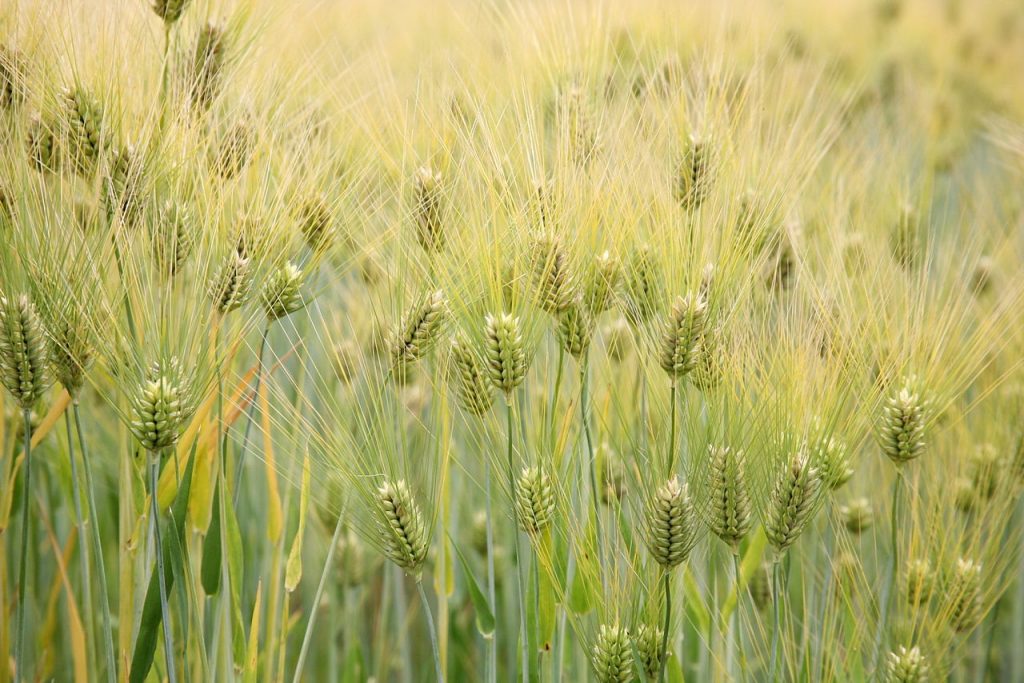
This annual cereal grain is a member of the grass family, Poaceae, that also includes rice, corn, and bamboo. It was domesticated in the Fertile Crescent about 11,000 years ago (c 9,000 BC) and spread throughout Eurasia, reaching Greece and Italy by 4th century BC. The ancient Roman naturalist, Pliny the Elder (died 79 AD), describes several kinds of barley including one with 6 rows of grain. Carbonized plant remains of Hordeum vulgare was found in the soil of the ancient Pompeii area dating to the time of the eruption of Vesuvius. Photo Credit Cliff Wikipedia
The grass grows over 36 ” tall and has erect stout stems that are hairless, and often branched at the base. The stems bear a few linear to lanceolate leaves and terminal spikes up to 8″ long carrying cylindrical spikelets in a herringbone pattern. The spikelets bear the seeds in either two rows or six rows and have very long bristly awns that are reminiscent of a fox tail. In modern times, barley is used for human consumption, animal fodder, and the production of beer and whiskey.
Size: 36′ H
Light: Full sun
Soil: Average, moderately moist, well-drained; somewhat drought tolerant
Hardiness: NA